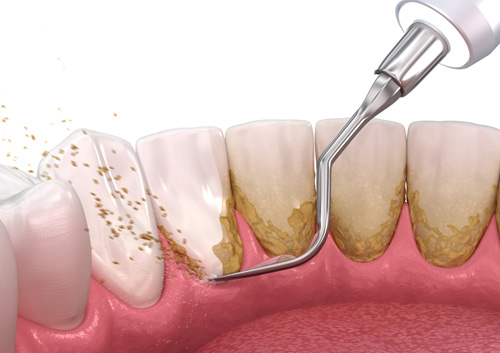Suffering from gum disease or periodontitis can be painful and interrupt your life significantly, so your dentist might have recommended a scaling and root planing procedure. But maybe they didn’t go into specific details about the procedure and what to expect, which could leave you feeling confused and underprepared. How common are scaling and root planing procedures? What happens if you avoid treatment? And what can you expect from the process?
If you’re feeling concerned about your scaling and root planing procedure, we may be able to give you a better understanding of the process and what you should expect. Union City Oral Surgery Group has extensive experience in dental practice and oral surgeries, and we prioritize our patients’ safety and well-being above all else. We pride ourselves on serving several areas around New Jersey, and we may also be able to help with your scaling and root planing procedure.
How Common Is a Scaling and Root Planing Procedure?
If you’re worried about the scaling and root planing procedure, it might help lessen your anxiety to know that it is a very common procedure. Dental and oral surgeons use this procedure frequently to treat patients with gum disease, meaning that most dentists are highly practiced and familiar with procedure and safety protocol.
What Happens If You Avoid Gum Disease Treatments?
If you avoid receiving treatment for your periodontitis, there are several risks you may face. Gum disease is caused by a buildup of plaque that may transform into tartar, eventually causing your gums to pull away from your teeth. This can form large pockets that are impossible to clean with a toothbrush and floss, and tending to this issue will require a dentist’s attention. Ultimately, surrounding tissue will become damaged, and you will likely suffer bone and teeth loss.
What Is Dental Scaling and Root Planing?
Scaling and root planing are nonsurgical procedures, and they include a deep cleanse performed with handheld instruments. In some cases, your surgeon may use ultrasonic devices instead. Dental scaling and root planing are the first steps dentists will generally recommend to begin treating gum disease or gingivitis.
What Happens During Scaling and Root Planing Procedures?
During the procedure, your surgeon or dentist will begin by scraping away all plaque and tartar on the affected areas of your teeth. This initial scraping surrounding your gum line is referred to as “scaling.” Root planing begins after this, as any rough surfaces on the roots of your teeth are smoothed down. Root planing makes it much easier for your gums to reattach to your teeth. In some cases, more than one session may be necessary.
Are There Risks to Scaling and Root Planing?
There are very few risks associated with scaling and root planing, but the procedure may introduce some harmful bacteria to your system. To avoid an infection, your dentist or surgeon will likely prescribe a mouth rinse or a course of antibiotics. These will also help your body speed up the healing process.
Following treatment, your gums will probably feel slightly painful, and your teeth may be sensitive. There’s also a possibility of your gums bleeding or feeling swollen after the procedure. These experiences are relatively standard, but we recommend speaking with your dentist or surgeon if the pain lasts longer than a few days or bleeding is excessive.
Get the Help You Need From Elizabeth Oral Surgery Group
If you have been diagnosed with periodontitis or gum disease and require treatment, Elizabeth Oral Surgery Group has the tools and resources you need. Our team of oral surgeons has extensive experience in multiple dental procedures, including scaling and root planing to treat gum disease.
To discuss any concerns, disclose your needs, and get helpful information before your procedure, please don’t hesitate to contact us at your convenience. You can get in touch with us by calling (908) 663-5309 or by completing our contact form. Work with us to improve your smile and health with surgeons you can trust!

